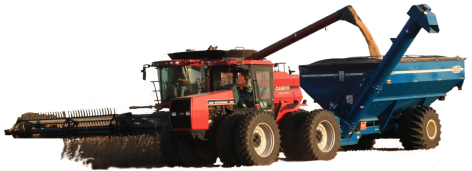
 -->
-->



 -->
-->


At Rebman Farms, we continually research various methods and products for use in our farming applications. Through innovative research and trials, we strive to bring a greater level of profitability to our farms. Listed below are links and descriptions to several tests and research projects we participated in for 2002. Follow each link to learn more.
The study was done to compare the yield and agronomic differences between GMO (Genetically Modified Organism) and Non-GMO hybrids Pioneer 34B24 (GMO) and Pioneer 34B23 (Non-GMO). Planting was in ideal conditions for gauging the efficacy of GMO corn. GMO corn shows its yield potential when conditions exist for high corn borer infestations, typically seen in late seasonal planting. In the 2002 crop year, this field was planted on 5/23/2002 with the outlined area being planted two days later due to seep water.

Study results show that the GMO corn yielded 17.59 bushels per acre more than the Non-GMO variety. Also noted, was the marked ability of the corn to withstand wind gusts, as the entire field was hit with damaging winds throughout the growing season. It must be noted that there was a 2 day difference in planting times, the GMO corn being planted first, as mentioned in the predeeding paragraph. Additionally, the GMO corn was one-tenth percent wetter than the Non-GMO corn. Before committing major acres to GMO corn, additional testing will be done to compare yields and minimize differences in conditions within the test area. My conclusion with this study's test results, and results in years past, is that GMO corn more than pays for the premium of the seed in yield, plant health, and harvestability.

Side by side fertilizer plots using anhydrous ammonia, an experimental polymer coated urea, and regular urea. The purpose was to determine efficacy of the products compared to anhydrous. The testing is being done in conjunction with Crop Production Services of Mt. Sterling, IL. All test results taken from yield monitor.
The field was treated consistently with all other respects (seed variety, chemicals, potash, and phosphate. I would have like to have seen the polymer coated urea put down with at the same time as the anhydrous ammonia, as it is my belief this would have yielded a more fair comparison. As the polymer coated urea is still in the experimental stage and was provided to me at the same cost as regular urea, no calculations were made to the economics of the two methods of nitrogen application.


In 2002, Rebman Farms planted four 20 acre soybean plots that were treated with Quadris® fungicide from Syngenta®. Quadris® is a flowable fungicide with the active ingredient azoxystrobin, which was developed from a naturally occurring fungicide found in certain wood decaying mushrooms. Quadris® is a reduced-risk fungicide with a novel mode of action that provides broad-spectrum disease control and significant yield and crop quality improvements on a wide range of crops including corn, soybeans, potatoes, cotton, leafy vegetables and wheat.
The fungicide was foliar applied in the R-3 stage of growth. Production problems, primarily stand reduction and replanting, in Schuyler County skewed data in two of the trials. McDonough County trials had fewer production problems and yielded better data. In the yield map below, you can see the yield difference to a greater extent in Trial #1 than in Trial #2.

The yield results from Trial #1 were an 7.46 bushels per acre yield increase in the treated area vs. the untreated area. Moisture was .7% higher for the treated vs. the untreated area.
The yield results from Trial #2 were 3.28 bushels per acre yield increase in the treated vs. the untreated area. Moisture was .6% higher for the treated vs. the untreated area.
I am cautiously optimistic about the yield increases seen here, although there was a significant difference in maturity dates for the treated vs. the untreated soybeans. More green stems were in evidence in the treated area, and harvest productivity measured in acres per hour harvested was greater for the treated vs. the untreated areas. It is my opinion that plant health was greatly improved, and as such, maturity was lengthened. I do not know if these facts translate into yield, however.
Cost per acre was not a factor in these trials. The objective of these trials was to study efficacy of the product under field conditions. Due to the unpredictable weather of 2002, we are going to plant more trials plots in 2003. Hopefully with further data, we will see some kind of pattern emerge that will give us more confidence in our evaluation of this new product, and help us break through some of the barriers to higher bean yields.
Please follow this link to learn more about Quadris®:
http://www.syngentacropprotection-us.com/prod/fungicide/quadris/Rebman Farms continues to be part of an infrared satellite remote sensing study conducted with IonCrops, Iuka, IL and H & B Specialties, Inc. of Pleasant Plains, IL. The objective is to see if infrared satellite photos can estimate crop conditions and detect plant health.
NDVI Infrared Satellite Map

GPS Yield Monitor Map

Satellite images will be produced at the four leaf stage and post pollination stage in August. Images will be compared to determine relative plant health conditions. GPS yield moniter maps are used to correlate conditions in the fields to actual yields.